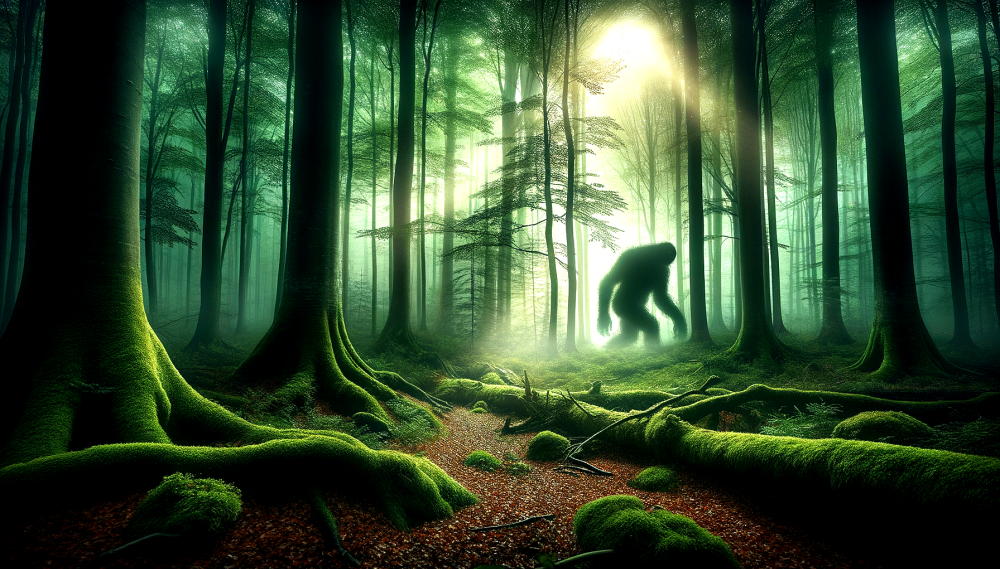
The question that always seems to pop up in every Bigfoot chat: ‘Where are the bones?’ It’s a point that’s hard to ignore. Think about it. If this legendary creature is roaming out there, you’d expect some physical proof, right? Something like skeletal remains that could finally put the debate to rest.
The lack of bones often serves as one of the biggest stumbling blocks for Bigfoot believers. Skeptics are quick to say, ‘No bones, no Bigfoot.’ It’s perfectly reasonable. After all, in the realm of science, physical evidence is king. When something is real, especially an animal, we usually have some remnants to study.
Yet, here we are, with decades of sightings and cryptic encounters but nothing concrete to show for it in terms of remains. It’s a genuine puzzler that warrants some deep thinking. As a dedicated Bigfoot enthusiast, this question has been my constant companion. I’ve sifted through numerous theories and can’t wait to share my thoughts with you.
So, what makes finding Bigfoot remains so tricky? Could there be forces at play that we’re missing? Buckle up and get ready to explore a world where possibilities go beyond the ordinary. Whether you’re a loyal believer or a curious skeptic, there’s always room for one more theory in this great unsolved mystery.
- Nature’s Cleanup Crew: A Logical Explanation
- The Burial Hypothesis: Bigfoot’s Possible Burial Rituals
- Hey there! I’m Shawn,
- Beyond the Physical: Supernatural or Interdimensional Theories
- Misidentification and Hoaxes: The Skeptical Perspective
- The Small Population Theory: A Numbers Game
- The Curious Mind: Embracing the Mystery of Bigfoot
- Conclusion: The Continual Search for Answers
- More Related Blogs!
Nature’s Cleanup Crew: A Logical Explanation
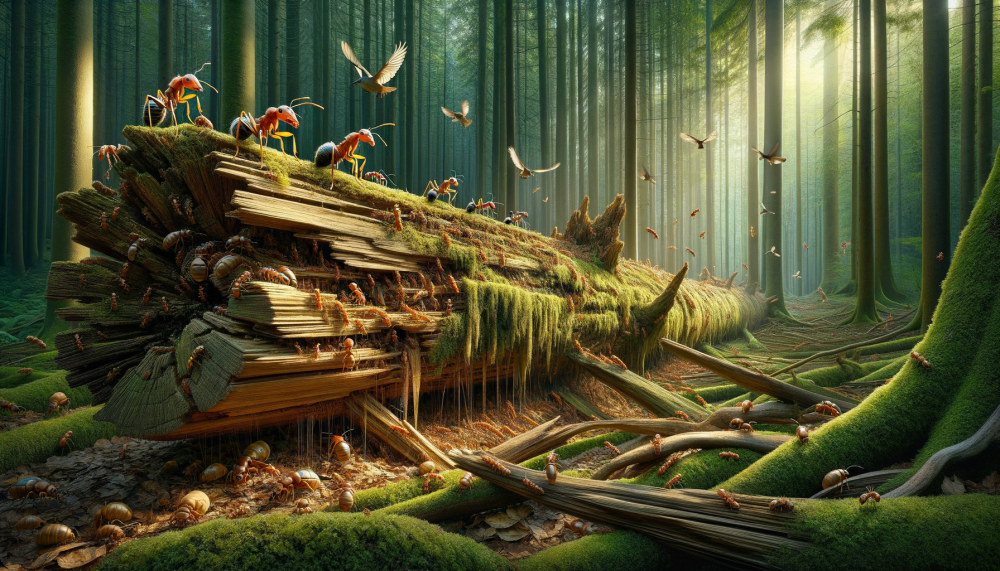
Imagine a world where everything left to rot just disappears without a trace. That’s what nature does, in a nutshell, especially in the wild regions Bigfoot might call home. In these dense forests and rugged mountains, anything that falls is swiftly taken care of. Scavengers like birds and insects are the first responders, breaking down remains way before we even get the hint of a scent.
You might think, ‘Surely, something as big as Bigfoot can’t just vanish?’ But here’s where it gets fascinating. Even large animals we’re more familiar with, like bears and mountain lions, often end up leaving little to no skeletal evidence behind. The elements do an efficient job of breaking down bones over time. Throw in a mix of rain, soil, and opportunistic critters, and it’s like nature’s own disposal service kicks into high gear.
The wilderness is not a gentle guardian of bones. Vegetation grows thick and fast, covering any evidence that dares linger for long. Plus, consider the sheer scale of these remote regions. Tons of ground cover make finding even a single bone needle-in-a-haystack hard. Easy to see why physical evidence of Bigfoot might not surface as popularly as we hope. But hey, it’s all part of the mystery that keeps us exploring!
The Burial Hypothesis: Bigfoot’s Possible Burial Rituals
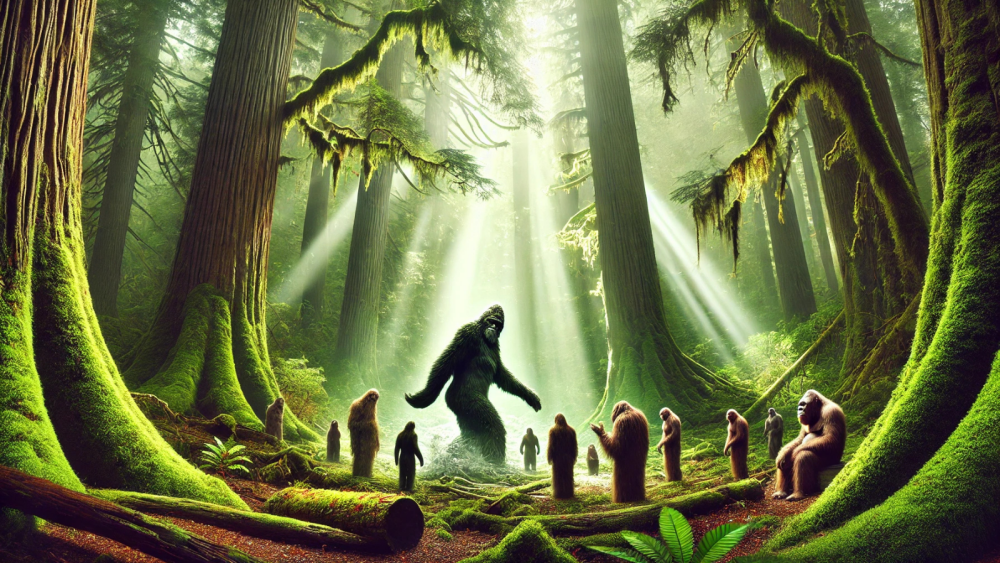
Picture this: Bigfoot, intelligent and elusive, might have its own way of dealing with death—a kind of burial practice. Sounds pretty wild, right? But not when you consider the behavior of intelligent species.
Think about it. Humans aren’t the only ones with burial rituals. Some primates and even elephants have been observed to cover their dead or at least show signs of mourning. If Bigfoot is closer to us or any intelligent creature, could burying their dead be part of what they do?
This theory circles back to folklore and those intriguing first-hand accounts, where people report seeing Bigfoot display a surprising level of cunning and emotion. If they bury their dead deep in their dense habitats, it would explain why we’ve never stumbled upon remains.
Now, why go through the trouble? Perhaps it’s about avoiding disease, or maybe it’s a social thing—a way to honor their kind. We can’t know for sure, but it certainly adds a compelling layer to the mystery.
Does this theory hold water? For me, it’s as valid a guess as any, adding a respectful nod to their intelligence. Imagine the insight we’d gain into these creatures if this proved true. It’s a thought that makes every Bigfoot hunt a bit more exciting.

Hey there! I’m Shawn,
Just a quick note to let you know some links on this site are affiliate links. They might lead you to exciting new products, my paranormal-themed books, or gear for Bigfoot and paranormal research. I only recommend items I truly believe in, and you’re never obligated to buy—clicking the links is completely free.
I also use AI tools to create engaging content, share updates, and improve your experience with fun visuals and helpful recommendations. If you make a purchase through an affiliate link, I may earn a small commission at no extra cost to you.
Transparency matters to me, so feel free to reach out with any questions. Thanks for exploring, and happy adventuring!
Owner of Paranormal Curiosities Realm and Wildfoot Explorers. Hope you enjoy the blog!

Beyond the Physical: Supernatural or Interdimensional Theories
Now, here’s where things step into the realm of the extraordinary, considering Bigfoot as possibly not entirely physical. Think about stories that describe Bigfoot sightings where the creature seems to just disappear into thin air. It makes you wonder, right?
Some folks suggest that Bigfoot might not be bound by our usual laws of nature. Could it be something more supernatural, or even interdimensional? These ideas might sound far-fetched, but when it comes to cryptids, everything’s a possibility until proven otherwise.
If Bigfoot isn’t just a creature of this world, perhaps its remains don’t stay here when it ‘passes on’. This theory could be like that puzzle piece that doesn’t seem to fit but somehow completes the picture for some believers.
Dipping toes into this mysterious water means accepting that we might not fully understand the physical world. It’s both thrilling and daunting to imagine that Bigfoot could slip between dimensions or realities, making it so elusive.
While these ideas fly in the face of traditional scientific methods, they add a fascinating dimension to the conversation. Maybe it’s a bridge too far for some, but it certainly spices up the great Bigfoot debate!
Misidentification and Hoaxes: The Skeptical Perspective
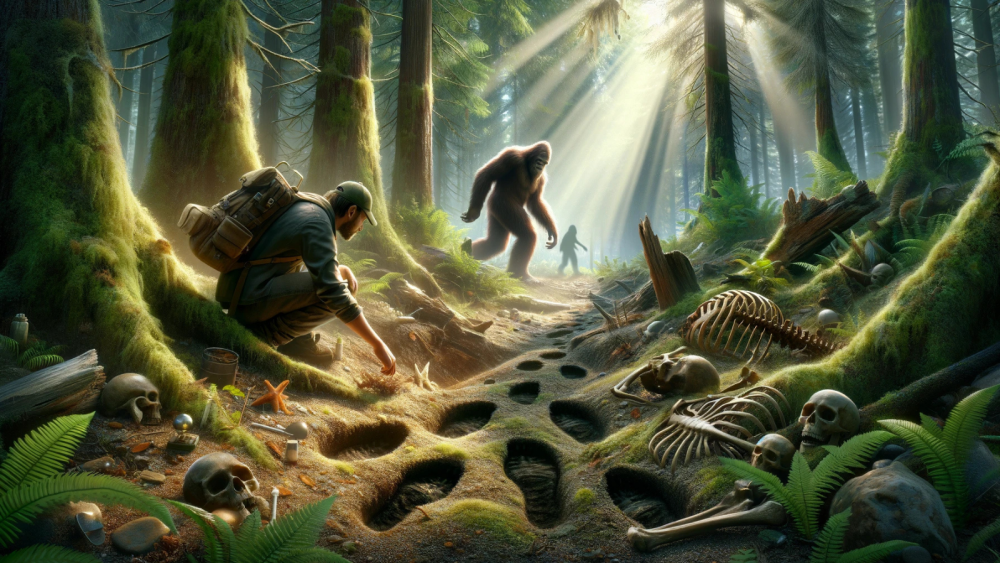
Ever stumbled across a story about Bigfoot bones only to find out it’s really just bear skeletons or, worse, a hoax? Happens more often than you’d think. These misidentifications play a massive role in why so many are skeptical about Bigfoot.
We’ve all heard tales of supposed evidence that turned out fake, like footprints crafted with wooden molds or ‘samples’ that DNA tests reveal belong to known animals. These tricks muddy the waters of genuine Bigfoot research.
Still, just because some evidence has been false doesn’t mean everything out there isn’t worthy of consideration. There are many stories, reports, and oddities that don’t fit neatly into these fraudulent boxes.
The skepticism isn’t all bad. It pushes the Bigfoot research community to verify and question every discovery critically. Each piece of false evidence is a lesson on being thorough and growing trust within and outside the enthusiast circle.
Despite the fakes and mistakes, people keep looking, confident that one day something authentic will prove the skeptics wrong. Until then, it’s crucial to stay curious but cautious, always keeping a critical eye on what’s presented as evidence.
The Small Population Theory: A Numbers Game
Ever hear the saying that finding Bigfoot is like winning the lottery? There’s some truth there, especially if the population’s small and scattered. If Bigfoot is out there, it’s likely that their numbers aren’t all that high.
Think about it like this: how often do we stumble upon bones of endangered species in the wild? It’s rare because their numbers are limited, and their territories are vast. For Bigfoot, whose existence might depend on staying hidden, this challenge could be multiplied.
In addition, consider the vastness of their suspected habitats—sprawling forests and rugged wilderness areas where few people trek, let alone investigate. With so many places to hide and so few Bigfeet potentially around, finding remains becomes like searching for a needle in an endless haystack.
This theory holds a certain appeal because it aligns with the secrecy that seems to surround Bigfoot. It also helps explain why there are plenty of sightings but no skeletons. If they travel in small groups and cover vast areas, encounters would be rare, and evidence even rarer.
It’s like this: for someone dedicated to looking for Bigfoot, every clue counts, and no lead is too small. Considering the numbers game keeps the search alive and suggests that the truth might just be out there waiting to be found.
The Curious Mind: Embracing the Mystery of Bigfoot
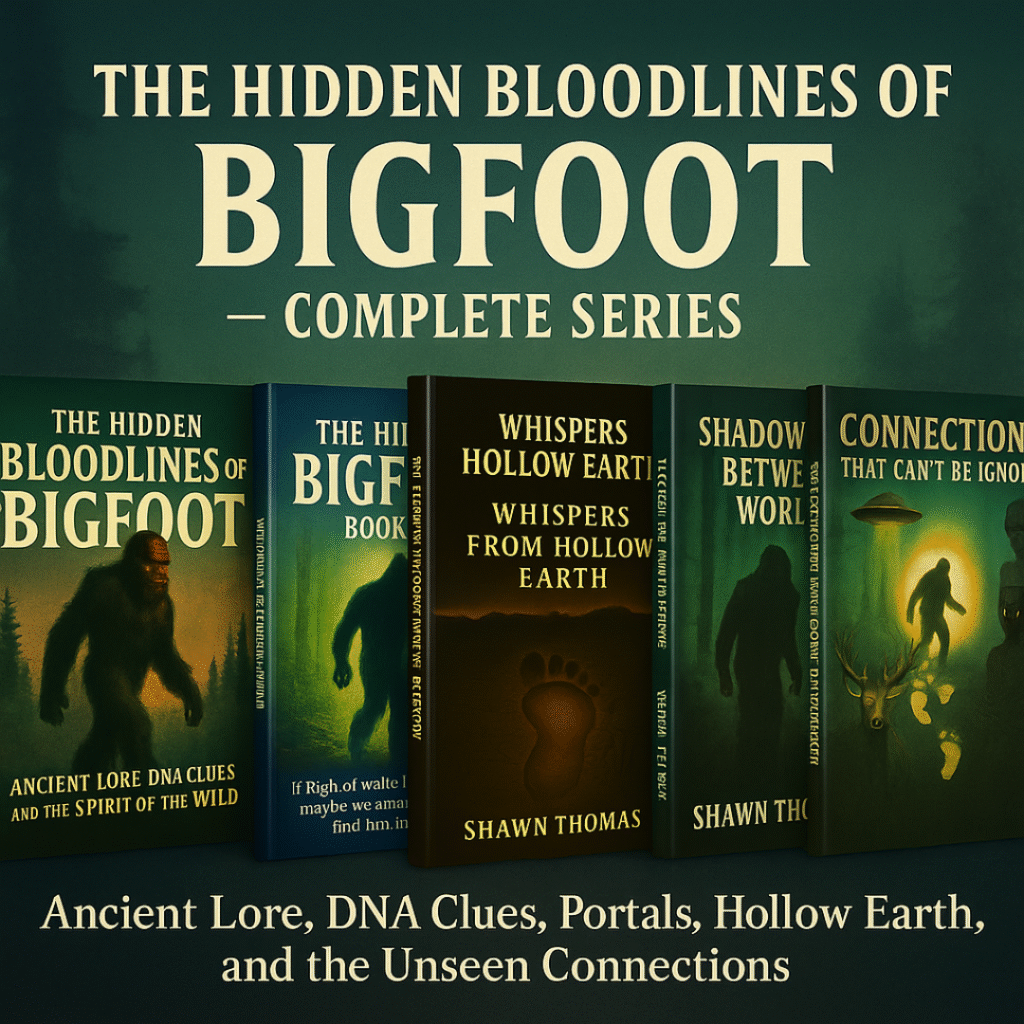
The charm of Bigfoot isn’t just in proving it exists; it’s about the allure of the great unknown. This mystery captivates imaginations and keeps enthusiasts excited about each new lead or sighting report we come across.
For folks like me, the lack of bones isn’t a dealbreaker—it’s part of what makes the chase so thrilling. Every theory, from burial practices to supernatural explanations, provides another piece to a story that’s still unfolding.
At the core, this mystery invites us to look beyond the ordinary and accept that not everything in the world fits inside those neat, scientific boxes we love so much. It’s why we swap stories late into the night and why each rustle in the woods holds a promise of something extraordinary.
Approaching Bigfoot with an open mind means enjoying the hunt without necessarily needing to bag the trophy. It’s about enjoying the ride, the stories, the community, and the constant teasing that maybe, just maybe, Bigfoot’s watching us right back.
Each skeptic’s raised eyebrow and each fellow believer’s encouraging nod just fuels the fire of curiosity, driving a wonderful journey of exploration and what-ifs. To me, that’s the magic of Bigfoot—keeping the adventure alive and the mystery tantalizingly unsolved.
Conclusion: The Continual Search for Answers
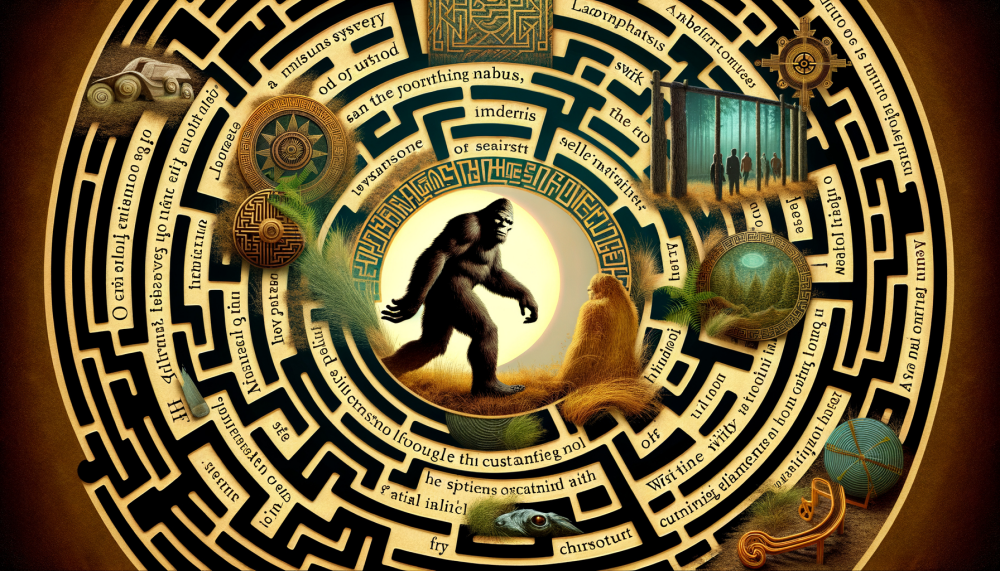
Bringing everything together, the mystery of Bigfoot and its elusive remains is a labyrinth that fascinates and fustrates in equal measure. Whether it’s the natural world’s swift cleanup, intriguing burial practices, or theories of a more supernatural nature, each idea gives us something new to consider.
For me, the pursuit isn’t just about verifying Bigfoot’s existence. It’s more about enjoying every twist and turn the mystery throws our way. This curiosity fuels relentless discussions and inspires dedicated research despite knowing the odds aren’t always in favor of finding tangible evidence.
What keeps this journey alive is the shared adventure—taking in stories from around the world, comparing notes, and endlessly debating the possibilities. Every new sighting, every unexplained sound in the woods, keeps the hope alive that one day the truth will surface.
So, whether you’re a seasoned enthusiast or a curious observer on the sidelines, there’s always room in the hunt for Bigfoot. After all, the world’s full of surprises, and somewhere out there, Bigfoot might be offering us the biggest surprise of them all. Keep exploring, keep questioning, and most importantly, keep the spirit of discovery alive.

Explore
More Related Blogs!

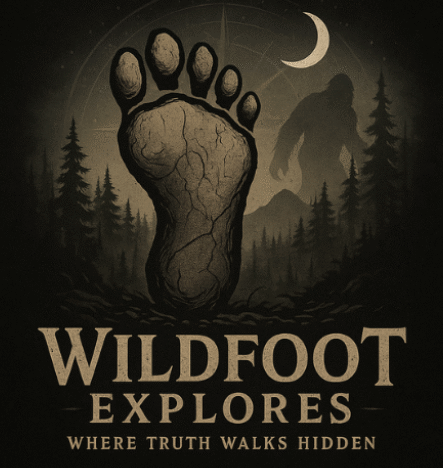

Thanks for this article, Shawn, which opens up a new topic in my brain. I have a few questions…
Why do you think the absence of Bigfoot remains continues to fuel both skepticism and belief in its existence?
In your opinion, what would discovering Bigfoot remains mean for the scientific community and Bigfoot enthusiasts alike?
If Bigfoot is indeed intelligent enough to bury its dead, what could this say about its emotional and social complexity?
What other theories might explain the missing skeletal remains of Bigfoot, aside from nature’s clean-up process or burial rituals?
Hi Katherine,
Thank you so much for reading my article and for leaving such thoughtful questions! I love when readers dive deep into the topic—it’s what makes exploring the unknown so fascinating!
Why the absence fuels skepticism and belief: I think the lack of physical evidence like remains is a double-edged sword. Skeptics see it as a reason to doubt Bigfoot’s existence, while believers view it as a testament to its possible intelligence or elusive nature. The mystery itself seems to keep the conversation alive!Discovering Bigfoot remains: For the scientific community, finding remains would be groundbreaking—a complete rethinking of our understanding of species and evolution. For enthusiasts, it would be the ultimate validation of years of research and belief, opening the door to new questions about Bigfoot’s biology, behavior, and history.If Bigfoot buries its dead: If this theory is true, it would suggest incredible emotional depth and social structures, potentially similar to early humans or great apes. It could hint at rituals, bonds, and even a sense of community we’ve only speculated about.Other theories on missing remains: Great question! Some other possibilities could include Bigfoot’s habitat being so remote and wild that remains decompose before they’re found, or that they have predator-like tendencies to consume remains. Another idea is that Bigfoot may avoid leaving traces deliberately, out of survival instincts honed over centuries.
I’d love to hear your thoughts on these ideas too. Thanks again for sparking such an engaging conversation, and I hope you’ll share more of your insights as we continue to explore these mysteries together!
Cheers,
Shawn